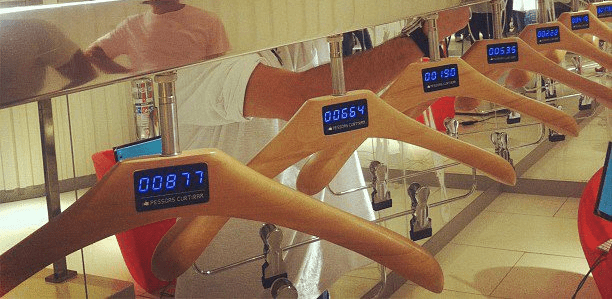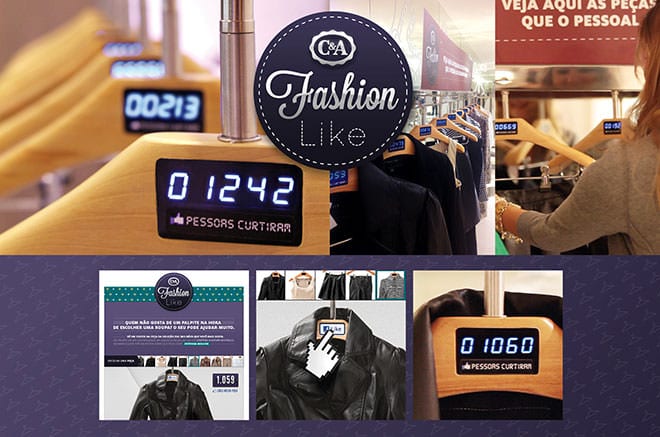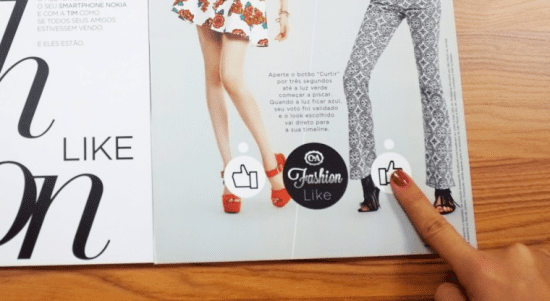Retail examples showing how to bring the on and offline worlds together through social and mobile channels.
I have been following the retail industry as businesses plunge or dip their toes into the omnichannel waters. Some are certainly doing some revolutionary, original campaigns using technology which I'll look at here - do share others you like!
This blog posts sums up my favourite case studies from retailers with some thoughts on how this will impact the modern marketing department’s strategies, as technology drives change.
How are retailers tackling the on and offline world?
Consumers are using multiple devices, screens, and channels to make purchases, but you know this already. Retailers still get a huge chunk of sales in their bricks and mortar outlets, for example clothing and footwear brands in the UK 44% of purchases are done in store*.
In store doesn’t provide the same level of data as their website or digital marketing activities. They will only know what you bought, not browsed, and it’s difficult to offer social validation or purchase incentives on a personal basis within the store environment.
However, here are some mini case studies that show how brands are using technology to close that gap.
Case 1: Fliike real-time facebook ‘Like’counter
Fliike is the first physical Facebook Fan or ‘Like’ counter specially designed for local businesses, public places, or say your office reception area. Created by start-up Smiirl it connects to a wifi-network and updates your Facebook page likes in real time.
Fliike by Smiirl from Smiirl on Vimeo.
Case 2: C&A Fashion Like
C&A may not be on the UK high street anymore, but it is a large retailer in Brazil. C&A worked with agency DDB Brasil to address a challenge that their shoppers faced: insecurity at the time of shopping, the need for social validation for their purchase.
The store placed clothes from a new collection on Facebook. Their fans could click and ‘LIKE’ the clothes which were added in real-time on the hangers for each item of clothing in store.

This resulted in 1,000 new fans per hour, part of the collection sold out in 1 day, and more than 1,700 posts on blogs and websites were created from this campaign.

Case 3: Print Magazine features working Facebook ‘Like ’buttons
Another C&A case study from agency DM8DMM , this time with a real on-and-offline merge. They developed the ‘Like-hanger’ idea used in their store experience and looked at integrating with print. As far as I am aware this is the first of its kind.
- The agency created a special edition of a celebrity magazine ‘Contigo’ which would demonstrate how the online and offline worlds can be integrated seamlessly.
- Using technology from Microsoft and telecoms company TIM Brasil, a special edit of the magazine was sent to user who had registered for a copy through Facebook.
- Each copy had a chip embedded that linked to the individuals Facebook account. The magazine ran an ad with two different fashion looks, each had a ‘like’ icon, and the ad asked users to vote for their favourite look.
- When the reader selected one of the outfits an LED lit up to indicate their vote, this triggered an automatic post on the reader’s Facebook feed telling their friends which one they preferred. At the same time, the data was sent to C&A where the number of Facebook likes were displayed in real-time.

Case 4: In store pick up and play tablets using NFC technology
CloudTags are working with a number of retailers with an innovative, omnichannel experience using mobile devises and NFC technology. These in store trials are spreading quickly as the results show that it not only improved the customer experience but provides value for the business, in not just data, but bottom line objectives: sales.
CloudTags - Harvey Nichols Experience from cloudtags on Vimeo.
The retailers such as Harvey Nichols and MADE (an online furniture retailer) have been putting tablets in stores for consumers to pick up and use. The customer simply enters their email address, which creates a customer profile and by interacting with physical products via tapping on NFC icons in store they get rich, in depth product content such as images, videos, and recommendations. There is also a separate tool that allows users to send details of the products to the inbox.
If assisted by staff, the store is able to track and attribute activity online (should the user go home and purchase) so the original sales persons is included in the credit for the sale.
Results
Harvey Nichols found that 90% of shoppers engaged in-store were not previously known to them. 16% of all shoppers engaged with the experience and 18% took further action after receiving an email.
MADE, also used the technology at their Notting Hill Show room. 21 % of consumers opted to have their in store collections sent to their inbox, 41% went on to browse products online, and over the course of the trial the average order value went up 15%.
Takeaways for retailers - mixing on and off-line world
These days’ people expect to interact with your company however, wherever and whenever they choose. Ease of purchase, good customer experience and strong engagement are moving beyond attractive extras and are becoming standard expectations.
-
Build your social media strategy
Social proofing is a powerful way to aid customer purchasing decisions, if they are unsure about you or your products; they can see what people online think about you. It would be great to see this evolve to feed live reviews of products; I wonder how many would be brave enough to do this.
Recommended Guide: Smart Insights 7 Steps to Social Media Marketing Guide
The Cloudtags examples show that for this to work you need to have more exclusive content, so your content strategy is key here, the same can be said about the C&A examples. Brands need to continue to focus on creating valuable, relevant content and distribute it where their customers need it along the buyer journey, both on and offline.
Recommended Guide: 7 Steps to Content Marketing Guide
With technology bleeding into the on and offline world getting your attribution models in order is critical. So get your house in order to make sure all your touch points are accounted for.
Recommended Guide: Using Attribution Modelling guide
*Source: Google Consumer Barometer- Smart Shopper Insights-filter to UK, Clothing and Footwear










